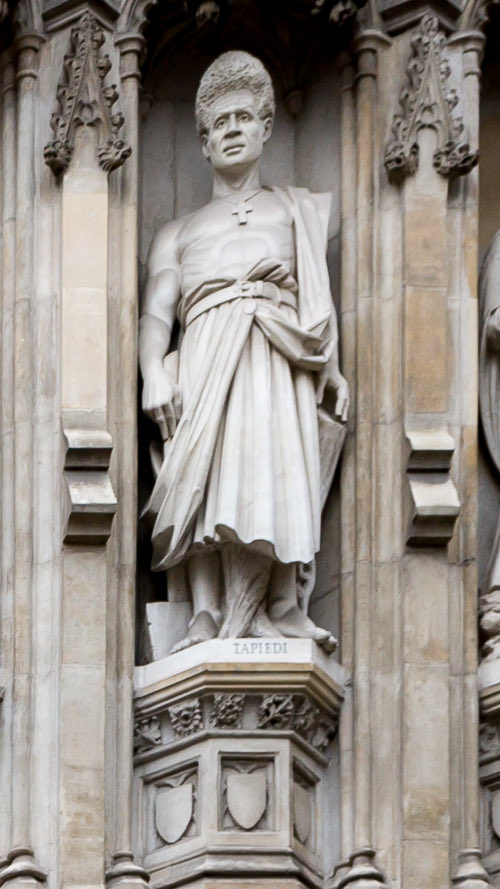✝️ Today in The Daily Office we remember Mother Teresa of Calcutta.
A 🧵
She was an Albanian-Indian Roman Catholic nun who founded the Missionaries of Charity, dedicated her life to serving "the poorest of the poor" in Calcutta and around the world, and became renowned for her charitable work and devotion to Christ.
"We can only do small things with great love." - Mother Teresa
A 🧵
She was an Albanian-Indian Roman Catholic nun who founded the Missionaries of Charity, dedicated her life to serving "the poorest of the poor" in Calcutta and around the world, and became renowned for her charitable work and devotion to Christ.
"We can only do small things with great love." - Mother Teresa

2/ Born in 1910 in Skopje, Mother Teresa joined the Sisters of Loreto at 18 and moved to India, where she founded the Missionaries of Charity in 1950.
She dedicated her life to serving "the poorest of the poor" in Calcutta's slums, establishing hospices, homes for orphaned children, and clinics for people with leprosy and HIV/AIDS.
She dedicated her life to serving "the poorest of the poor" in Calcutta's slums, establishing hospices, homes for orphaned children, and clinics for people with leprosy and HIV/AIDS.

3/ She lived out her faith through radical acts of charity, seeing Christ in the poor and marginalized, inspired by Jesus' words "I thirst" and "As you did to the least of these, you did it to me".
And she received numerous honors including the Nobel Peace Prize in 1979, using the monetary award to serve the poor in India.
And she received numerous honors including the Nobel Peace Prize in 1979, using the monetary award to serve the poor in India.

4/ She experienced a profound "dark night of the soul," feeling spiritual emptiness while continuing her tireless work, demonstrating deep faith beyond emotions.
She was canonized as a saint in the Roman Catholic Church in 2016, with her feast day celebrated on September 5, the anniversary of her death in 1997.
"And the King will answer them, 'Truly, I say to you, as you did it to one of the least of these my brothers, you did it to me.'"
- Matthew 25:40
She was canonized as a saint in the Roman Catholic Church in 2016, with her feast day celebrated on September 5, the anniversary of her death in 1997.
"And the King will answer them, 'Truly, I say to you, as you did it to one of the least of these my brothers, you did it to me.'"
- Matthew 25:40

🙏🏻
Almighty and everlasting God,
who didst enkindle the flame of thy love in the heart of thy servant Mother Teresa to manifest divine compassion and mercy to the poor and the persecuted:
Vouchsafe unto us, thy humble servants, a like faith and power of love, that we who give thanks for her righteous zeal may profit by her example; through Jesus Christ thy Son our Lord, who liveth and reigneth with thee, in the unity of the Holy Ghost, ever one God,
world without end,
Amen.
Almighty and everlasting God,
who didst enkindle the flame of thy love in the heart of thy servant Mother Teresa to manifest divine compassion and mercy to the poor and the persecuted:
Vouchsafe unto us, thy humble servants, a like faith and power of love, that we who give thanks for her righteous zeal may profit by her example; through Jesus Christ thy Son our Lord, who liveth and reigneth with thee, in the unity of the Holy Ghost, ever one God,
world without end,
Amen.

🧑🧑🧒🧒We’re a church without a building right now.
🙋🏻♂️Can you help us?
⛪️We can do so much more to bring people to Jesus and to serve the community if we had a building of our own.
🥅Please donate or share to reach our goal.
Thank you.
🙏🏻
👉🏻 democracythree.org/saveachurch
🙋🏻♂️Can you help us?
⛪️We can do so much more to bring people to Jesus and to serve the community if we had a building of our own.
🥅Please donate or share to reach our goal.
Thank you.
🙏🏻
👉🏻 democracythree.org/saveachurch
@threadreaderapp unroll
• • •
Missing some Tweet in this thread? You can try to
force a refresh






















